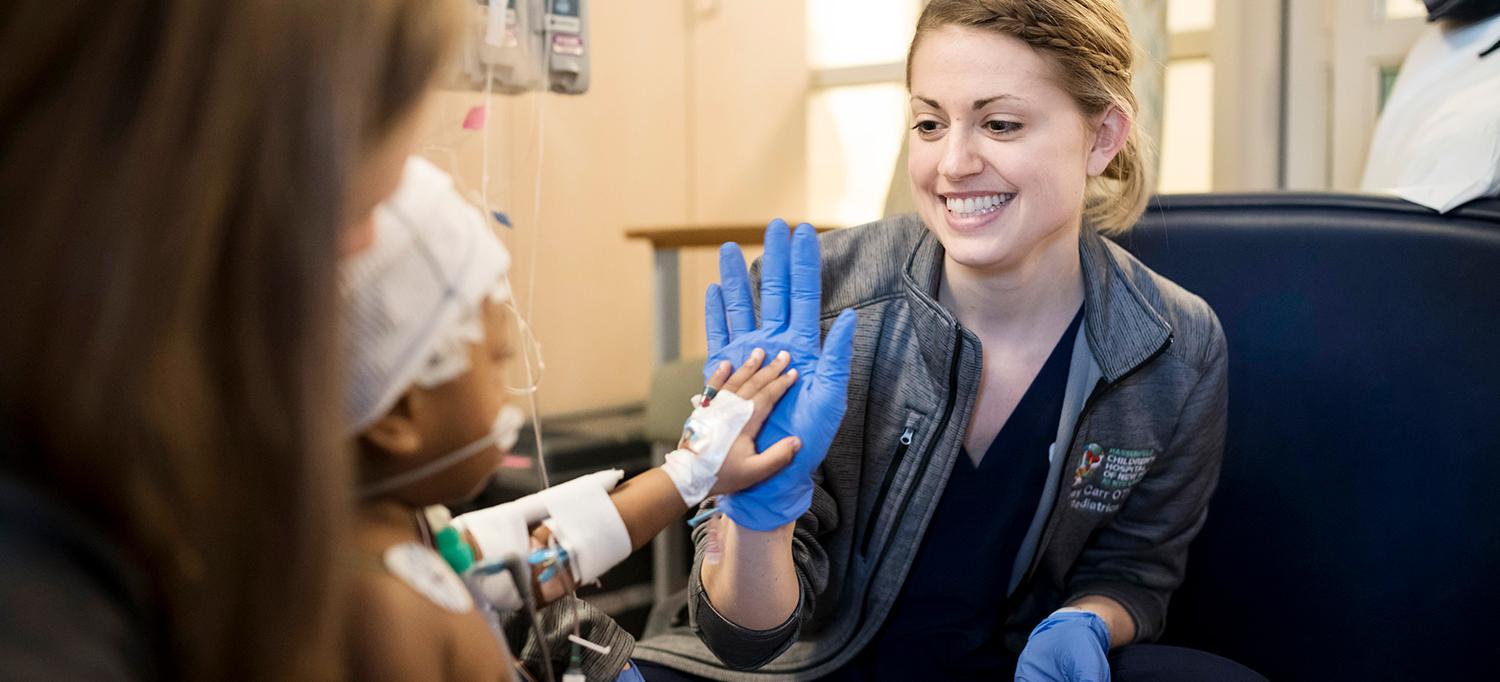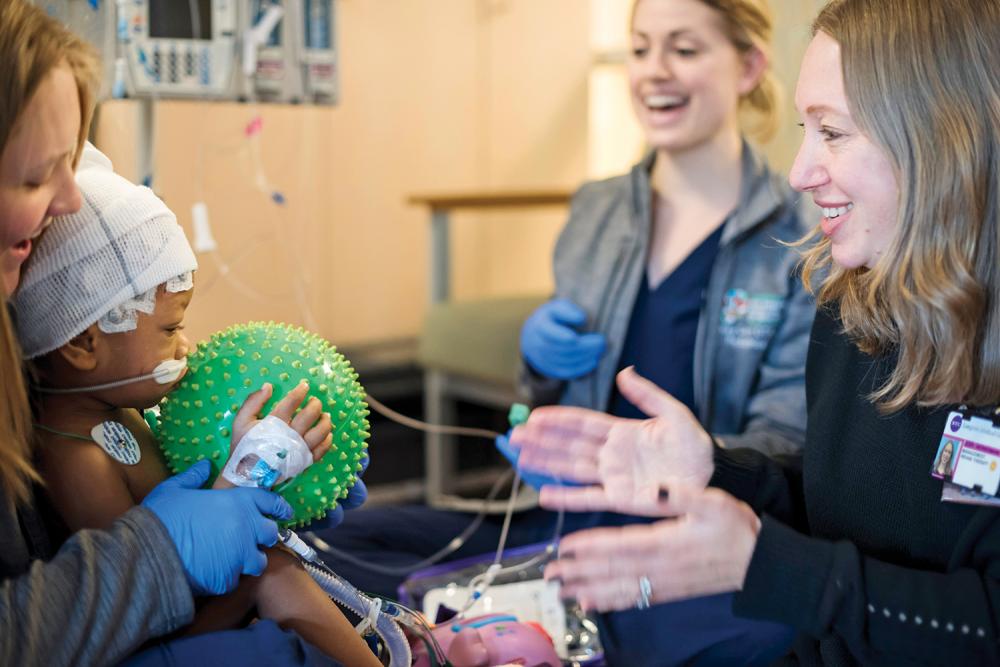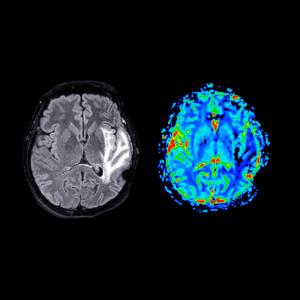
PHOTO: KARSTEN MORAN
After launching a successful early mobilization program for adult critical care patients, rehabilitation leaders at Rusk Rehabilitation turned to the pediatric ICU (PICU) to apply their findings. After one year, their PICU initiative has cut length of stay and increased the home discharge rate for critically ill children. Project leaders say the keys to its success are communication and collaboration.
NYU Langone Health is one of a handful of hospitals pioneering early mobilization in pediatric critical care. As part of this overall effort, Rusk launched the PICU early mobilization initiative in 2016. Project leaders began by developing an algorithm for identifying early rehabilitation candidates. The initial goal was to mobilize non-ventilated pediatric patients within 18 hours of admission and mechanically ventilated patients within 48 hours.
“Meeting these targets can be challenging, because caregivers are often reluctant to mobilize these children,” says Jodi Herbsman, PT, DPT, program manager of acute care rehabilitation therapy services. “They may be uneasy about patient safety or may simply want to let the child rest.”
To increase staff comfort with the protocol, project leaders trained nurses and therapists in techniques for safely mobilizing complex pediatric patients, with an emphasis on hands-on experience.
“We required all team members to practice on patients with their lines in, and at times with the caregivers at the bedside, to create an experience they could not simulate by practicing on each other,” says Herbsman. “We also required nurses and therapists to practice treating patients together, which helped to build a greater sense of teamwork.”
The early mobilization team also addressed speech-language pathology. “The speech therapist used tablet computers and other tools to help young patients express their concerns so the PTs/OTs or nurses could answer their questions,” says Herbsman. “This allowed the patient to be part of the process.”
Family Advisors Played Critical Role
According to Herbsman, a significant enhancement to Rusk’s pediatric early mobilization program was the involvement of family advisors—parents who have lived through the experience of a child being hospitalized. “We had two family advisors on our pediatric early mobilization team who really helped us work through barriers for this project,” she notes.
In June and July 2016, the family advisors interviewed several PICU patients and their parents or caregivers, with the goal of understanding family perceptions of early mobilization.
“The most surprising feedback from these firsthand perspectives was that families did not have a clear understanding of the role of PTs, OTs, and speech therapists,” notes Herbsman. “Based on this insight, we engaged the family advisors to script our therapists to explain their roles and values in family-friendly ways.”
The family advisors also found that parents were unsure about timing and expectations. “They were never really sure when the therapists were coming or whether they were coming back,” says Herbsman. “So we encouraged therapists to give families an approximate time line of when they would be there.”
In addition to the interviews, the family advisors took part in staff training. “They helped educate nurses on the benefits of early mobilization for both the patient and the parent,” adds Herbsman. “It was incredibly powerful for our team to hear from our PICU families how a sense of hope and normalcy was restored once their children started to move.”
Significant Improvements in PICU Metrics
To evaluate the initiative, project leaders compared a pre-intervention group (73 patients treated in late 2015) with a post-intervention group (110 patients treated across the same dates in 2016).
Overall, the data showed that staff education and training increased the use of early mobilization: Between pre-intervention and post-intervention, patients mobilized within target time frames increased from 56 percent to 82 percent.
This led to measurable improvements in patient outcomes. “For patients who were not mechanically ventilated, length of stay in the PICU decreased from 3.5 days to 2.4 days,” says Herbsman. “In addition, total length of stay for these patients decreased from 6.1 days to 4.2 days.”
Early mobilization also improved discharge disposition. “In the pre-intervention group, 85 percent of nonmechanically ventilated patients were discharged directly home,” notes Herbsman. “With the intervention, the home discharge rate increased to 95 percent.”
Due to the small number of patients in the mechanically ventilated group, the data for that population yielded no statistically significant results. However, the study did demonstrate the overall safety of early mobilization in the PICU. “There were no safety events whatsoever—no lines that came out, no unplanned extubations, no falls,” adds Herbsman. Rehabilitation leaders at Rusk are currently working to re-tune their approach to pediatric early mobilization by improving coordination. “Our biggest takeaway is that early mobilization is not something anyone can do alone,” concludes Herbsman. “It requires real multidisciplinary effort and coordination.”


